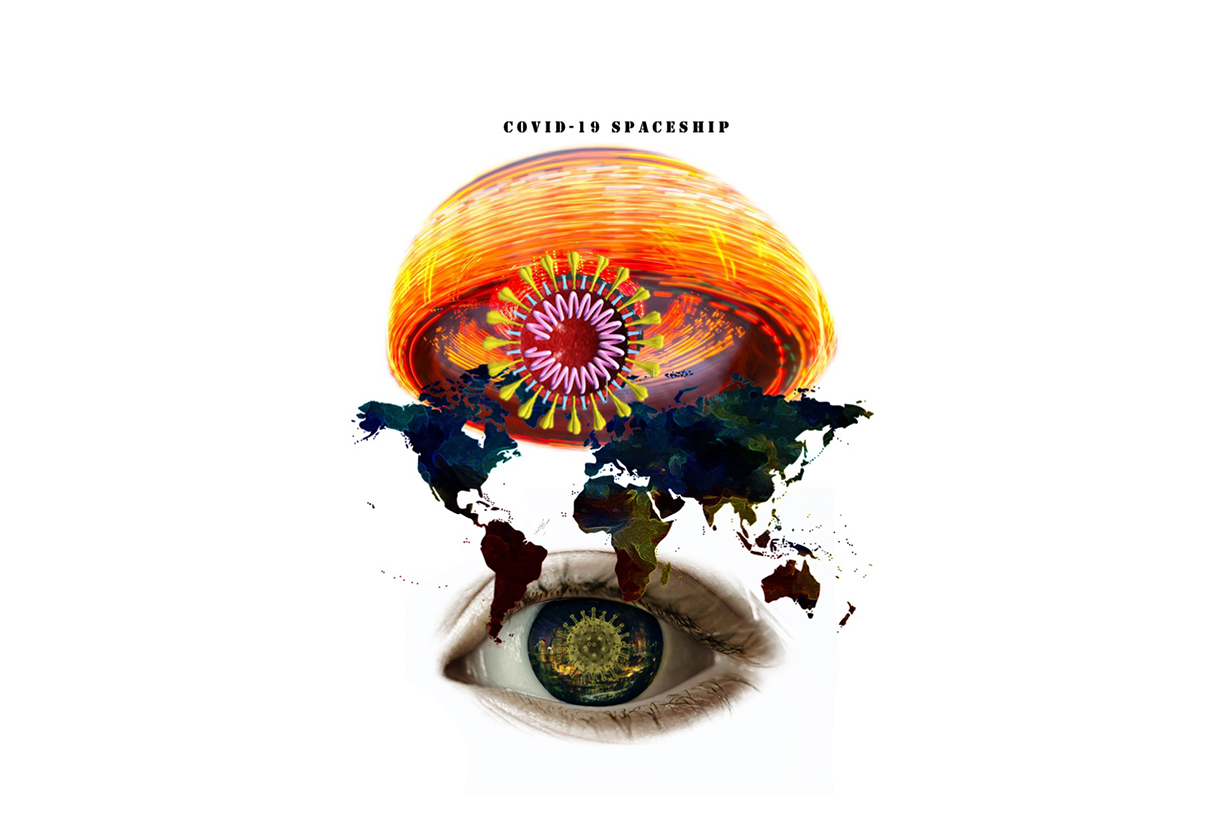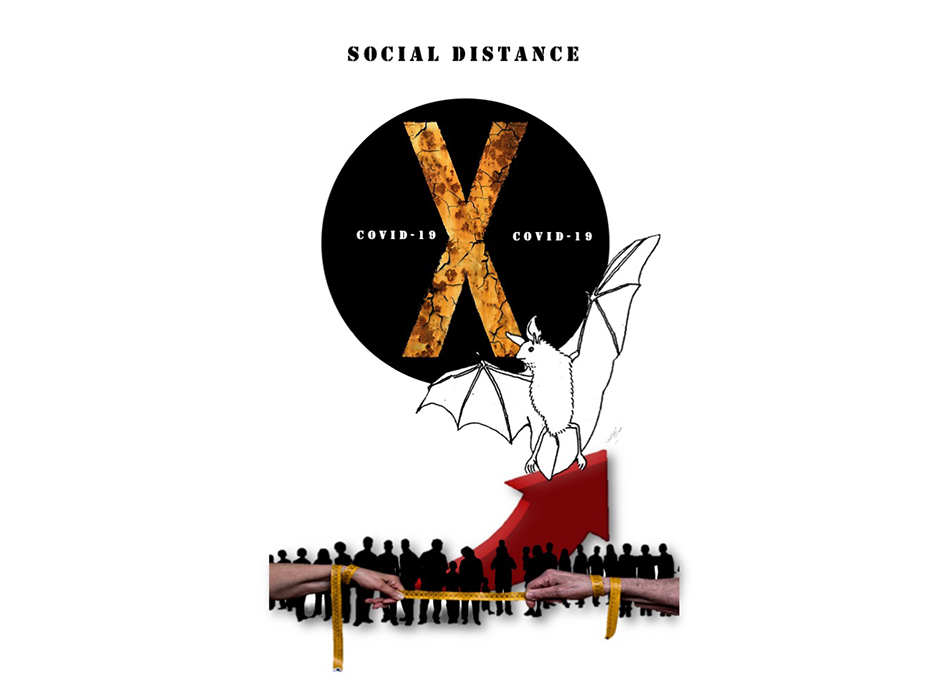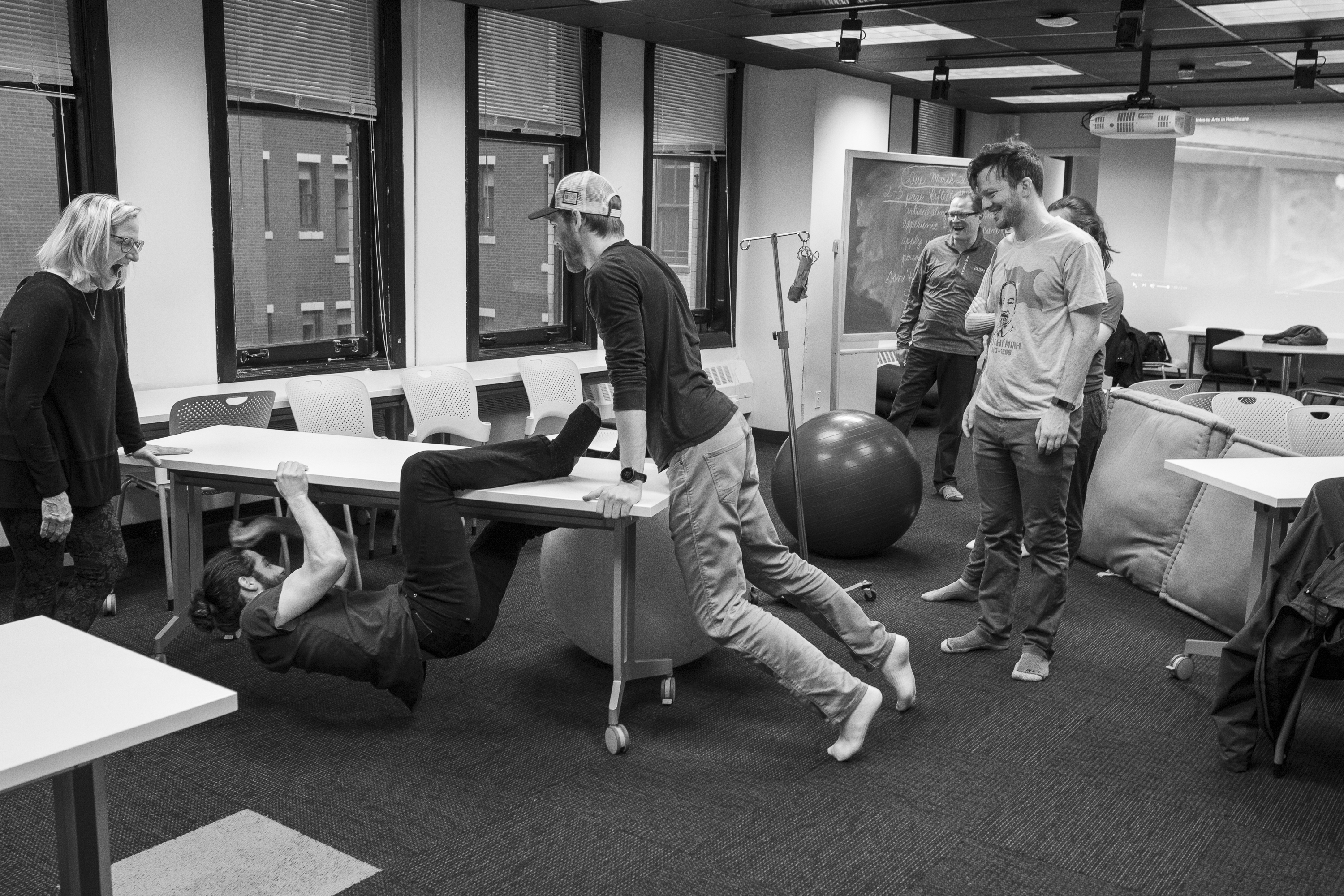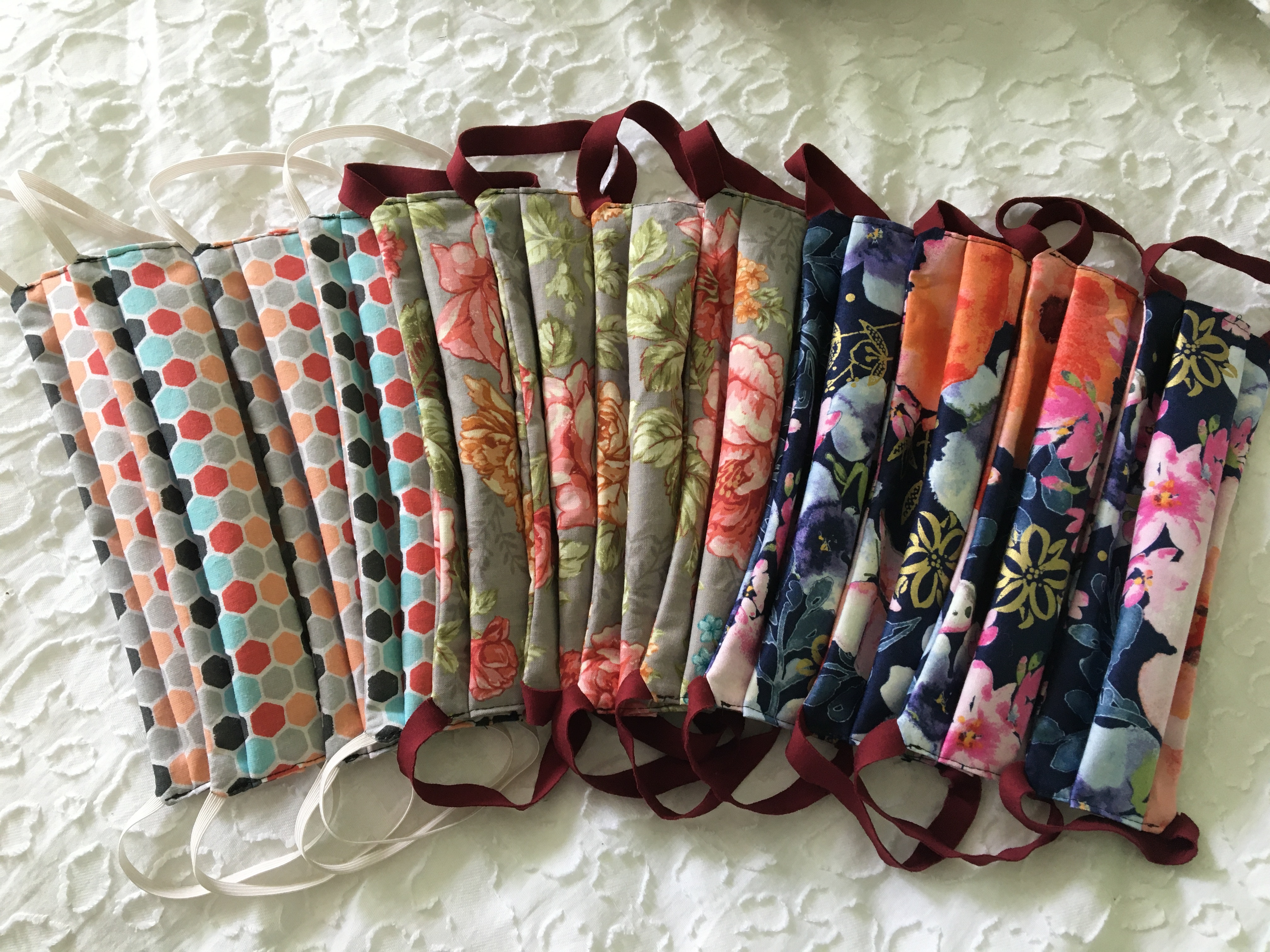The Art of the Uplift: How Creatives Restore Community
 Credit: Paria Izadmehr '20
Credit: Paria Izadmehr '20Being an artist is to take a situation and say “what can I do with this?” So you turn to what you know, and start making.
“People are turning to art right now to find solace,” Joan Giroux, Professor of Art and Art History said; “Part of that impulse is to pass the time, but a large part of it is searching for and finding—in images, music, literature, film, dance—reminders that others experience the world in ways similar to us, and with commonality. Or, as another possibility, to recognize alternatives.” Art gives creatives and the consumer permission to feel and use our imaginations. Giroux adds, “in today’s [with] such uncertain outcomes, having other options may provide strength, or hope, or space to feel grief and despair, and to move through it.” Much of Giroux’s work centers around experiences of illness, death, and dying, and what it means to be a caregiver. She notes that this moment will find its way into her work.
Art is often used to help process emotions and to express an artist’s personal expression and imagination. During times of crisis, creatives may turn to their art as a way to cope. Once the art is shared, art can help crises be made sense of, both by people who were there and those who learn about it in history books. The Emotional Mind (2019) written by Associate Professor of Psychology Rami Gabriel and Professor of Philosophy Stephen Asma, explains the evolution of art. “[It] serves to record, in a lasting and public form, information that would otherwise be lost, creating history and precedents for future generations across various structures of meaning.”
Comedians often need to take creative risks and experiment regularly to connect with their audiences. “When we make comedy, we take things that are true and painful, and we choose to look at them from a perspective that allows us to see the ridiculousness and the absurdity and the commonality and to share that with other people. And it is the connection to other people that makes the biggest difference of all, even when we aren't physically connected, comedy creates connections between us. So, it's worth making, right now, together in whatever way we can be together,” said Assistant Professor and Director of Comedy Studies for the Theater Department Anne Libera.
Libera teaches her students that comedy provides social connection and mental respite from pain. She adds that the "recipe" for comedy is Recognition + Pain + Distance. And how much of each element we need to get a laugh at any point in time is very different. When there is so much pain in the world right now, comedians don’t need to put a lot of their own pain in the comedy to make it work. Seeing a piece of comedy that presents an experience that we have right now and recognizing that other people are also experiencing it can be enough to make us laugh. And when we laugh, we get a bit of objectivity (distance) on our own problems because we recognize that we aren't alone.
To prepare its faculty and students for teaching in the new learning environment, Columbia’s Theatre Department created a humorous short video that highlights what not to do when video conferencing.
Students are also using this time to create. Senior Paria Izadmehrsays art has helped her “during this time of uncertainty and grief. This is a way that I can demonstrate, transform, and release all the feelings and struggles that we all are facing at this time.”

(Credit: Paria Izadmehr '20)
Like Comedy Studies, Creative Arts Therapies uses artistic expression to process one’s emotions, address trauma, resolve inner conflicts, and improve well-being ( American Art Therapy Association). Susan Imus, Associate Professor and Chair of the Department of Creative Arts Therapies, has dedicated her professional life to Arts in Health. She has used art, dance, poetry, and music to assist people of all ages to cope with and cure adversity in their lives.
While art makes us feel good, there’s also science behind why it works. Neuroscience has proven that art has a therapeutic effect which creates profound biochemical changes in the body that result in improved mood and decreased anxiety. Imus is currently teaching a course, Embodiment, in which her students do a practicum at Rush University Medical center and projects with Rush Medical College. In a current project, Images of Health, first year Rush Medical students, Music Composition 4, and Advanced Studies in Dance students create original photography, art, poetry, dances and music compositions depicting images of health from a broad spectrum of age, race, gender, sexual orientation, family, education and economic status. Imus is looking forward to seeing how her students’ images of health transform as we now experience the biggest health pandemic in our lifetimes.

(Credit: Peter Fitzpatrick)
In the image above, students from Susan Imus’ Embodiment class with Rush Medical College traveled through obstacles and created new approaches to movement. The class then discussed the student’s movement as it related to resiliency at this time in their lives with COVID-19.
According to Olga Goldenberg, Assistant Professor of Psychology, while the creative process in art therapy is usually guided by a trained therapist, creating art independently during a time of crisis can have the following positive effects for an individual:
- Artistic expression can help a person recognize complex feelings about an issue they are facing, revealing feelings and thoughts that may be lurking in the unconscious (part of our mind of which we are unaware). This self-discovery can be an important step toward addressing these emotional states.
- Art also provides a healthy outlet for negative feelings, such as anxiety, anger, and sadness. It can help people externalize and let go off of some of these emotions.
- Creating art can relieve stress and help the artist to relax, even if the art does not address the topic of the crisis. Creatives are passionate about their artistic domain. Creativity is driven by what is known as intrinsic motivation, a concept first introduced by an influential creativity scholar Theresa Amabile, which means working on a task for the sake of the task itself, not because one has to. In other words, creatives make art because the process brings them joy, which is welcome distraction and positive energy boost during a time of crisis.
- Finally, making art can boost a sense of productivity and accomplishment during otherwise unproductive and stale times. It can also aid in regaining the self of control over one’s circumstances (Albert Bandura, 1960s) because a person freely chooses to engage in the activity and has direct influence on its outcome.
As Goldenberg says, “Creatives use art to communicate their thoughts, emotions, and even past and intended behaviors. So, during the time of crisis, it might be particularly compelling to use one’s natural language to make sense of and cope with one’s own internal states and external reality, as well as to communicate with others.” Goldenberg’s advice for those who feel bored, unproductive or lacking energy is to “make time every day to engage in an activity that brings joy to them, whether it be making art, writing, cooking, etc. and connecting to other people (virtually) even if they identify with being an introvert.”

Fashion Studies at Columbia College Chicago has launched #ColumbiaMakesMasks, an initiative with the goal of making 2,000 cotton covers for N95 masks to prolong the usable life of personal protective equipment for healthcare providers responding to the COVID-19 crisis.
That is to say: your art doesn’t have to be polished for an external audience—and certainly doesn’t need to be optimized for financial gain to make critical contributions to your own well-being and that of the world’s.
MEDIA INQUIRIES
Sarah Borchardt
Communications Manager
sborchardt@colum.edu
312-369-7054
Recent News
- Students Excel When Following Passions in Columbia Core Curriculum
- Tomas Videla, MFA ’19, on Building a Life from His Love of Music
- Columbia Student Talks About Her Passion for Illustration
- Five Things to Check Out Online During Columbia's Winter Break
- Associate Professor Carmelo Esterrich to publish Star Wars Multiverse in 2021